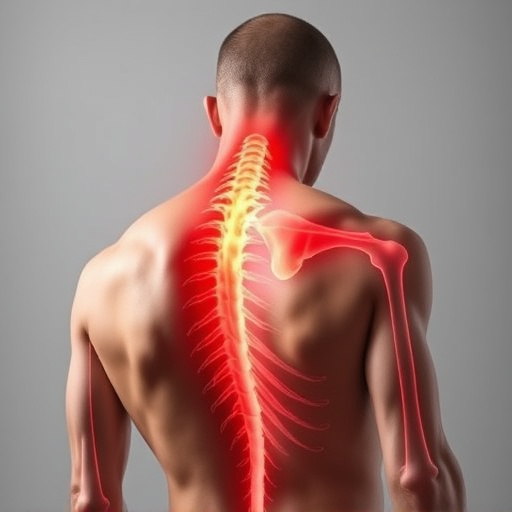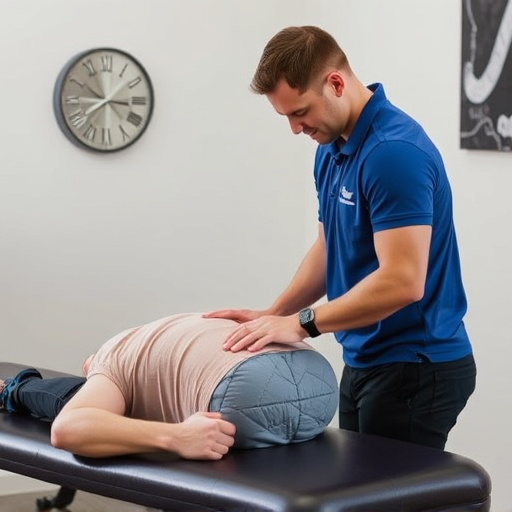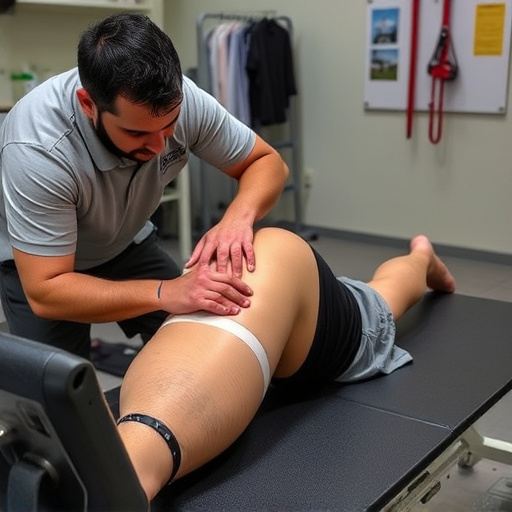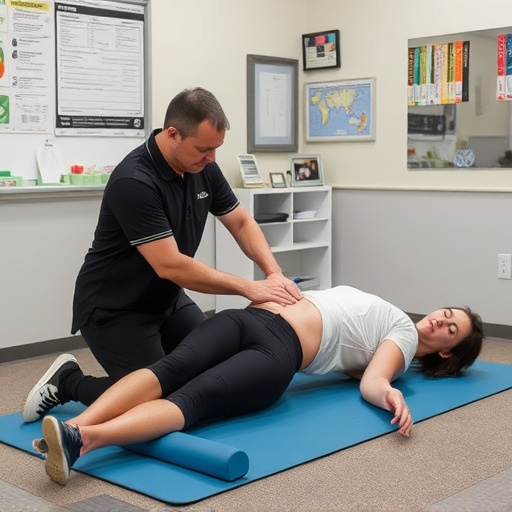Ergonomic injuries, common in office settings due to prolonged sitting and computer use, can be treated effectively through rest, physical therapy, and post-injury care like spinal adjustments. Early recognition is key, with over-the-counter painkillers and specialized treatments offering relief. Preventive measures include regular breaks, workplace ergonomics, and employee reporting of discomfort, leading to personalized treatment plans involving spinal adjustments and ergonomic assessments. Combining these strategies ensures employees' comfort, health, and productivity during the workday.
Office workers today face an increasing risk of ergonomic injuries due to prolonged sitting, repetitive tasks, and inadequate workstation setup. This article explores common ergonomic injury treatment options for office employees, from immediate interventions like rest and physical therapy to longer-term strategies such as ergonomic equipment and workplace modifications. By understanding these treatments and implementing preventive measures, organizations can foster a healthier work environment, reducing the impact of ergonomic injuries on their workforce.
- Understanding Ergonomic Injuries in Office Workers
- Treatment Options and Their Effectiveness
- Preventing Future Ergonomic Injuries at Work
Understanding Ergonomic Injuries in Office Workers
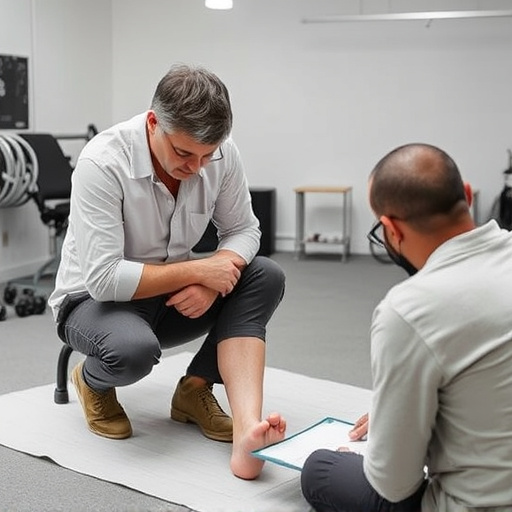
Ergonomic injuries among office workers have become increasingly prevalent due to prolonged periods spent sitting at desks and using computers. These injuries are often caused by poor workstation setup, incorrect posture, or repetitive tasks that place excessive strain on the body. Common ergonomic injuries include back pain, neck stiffness, carpal tunnel syndrome, and tendinitis.
Recognizing these issues early is key to effective ergonomic injury treatment. Injury rehabilitation may involve a combination of rest, physical therapy, and post-injury care such as spinal adjustments. Employers can play a significant role in preventing these injuries by ensuring proper workstation ergonomics and encouraging regular breaks to promote employee well-being.
Treatment Options and Their Effectiveness
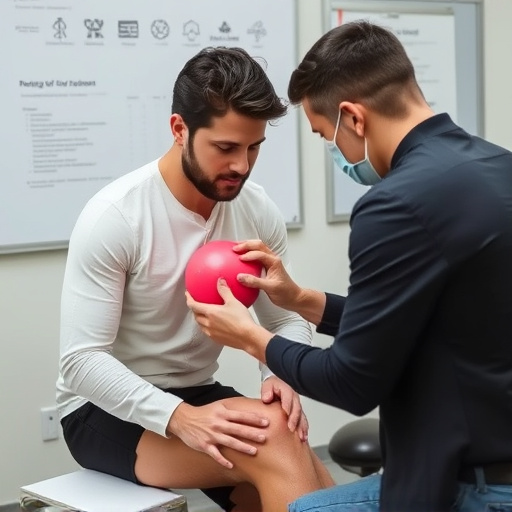
When dealing with ergonomic injuries, a multifaceted approach to treatment is often most effective. The first step usually involves addressing the root cause through adjustments to work stations and routines to prevent further strain. Over-the-counter pain relievers can offer temporary headache relief for many office workers suffering from ergonomic-related discomfort. For more persistent issues, options like physical therapy, heat/ice treatments, and specialized ergonomic equipment can significantly improve symptoms.
For certain conditions, shockwave therapy has emerged as a promising treatment option, offering an alternative approach to traditional therapies. Post-injury care plays a crucial role in the recovery process, ensuring employees receive proper guidance on managing their condition and returning to work safely. A combination of these strategies tailored to individual needs can lead to more lasting ergonomic injury treatment outcomes.
Preventing Future Ergonomic Injuries at Work
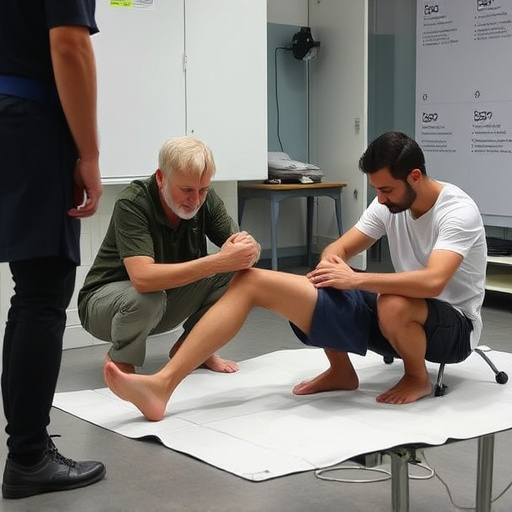
Preventing ergonomic injuries is an essential step for office workers to maintain their health and productivity. Regular breaks are crucial; every hour, employees should stand up, stretch, and change their posture. Simple actions like adjusting computer screens to eye level, ensuring proper chair height, and using supportive equipment can significantly reduce the risk of pain and discomfort. Additionally, employers should encourage employees to report any initial signs of discomfort or unusual symptoms, as early intervention can prevent minor issues from escalating into more severe ergonomic injuries.
To further mitigate risks, personalized treatment plans tailored to individual needs should be implemented. This may include spinal adjustments, specialized exercises, and ergonomic assessments. Headache relief is another critical aspect; ergoterapists can offer strategies to manage recurring headaches associated with work-related stress and posture issues. By combining these preventive measures with appropriate ergonomic injury treatment, offices can create a healthier working environment, ensuring employees stay comfortable and focused throughout their workday.
Ergonomic injuries among office workers are a growing concern, but with the right approach, these issues can be effectively addressed. By understanding the root causes and implementing preventive measures, organizations can create a safer work environment. The treatment options discussed in this article offer viable paths to recovery, each with its own merits. Physical therapy, for instance, has proven successful in reducing pain and improving mobility. Additionally, ergonomic equipment and workstation adjustments play a vital role in long-term injury prevention. By combining these strategies, employers can empower their employees to work comfortably and securely, minimizing the impact of ergonomic injuries in the modern office setting.











